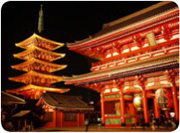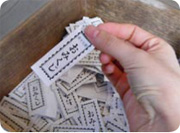[SERIES] STUDENTS'CORNER: Ways of Japan
Hatsumoude
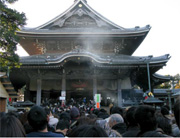
Hatsumoude crowds at Toyokawa Inari shrine in Aichi Prefecture
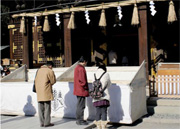
People pray for health and happiness at the start of the new year
is the ritual of visiting a shrine or temple for the first time following the beginning of a new year. January 1 is called
Ganjitsu in Japan, and many people around the country flock to shrines and temples from late December 31 to welcome the new year. The method of prayer differs at shrines and temples, but during hatsumoude, people offer thanks for the past year and pray for safety and peace in the new year.
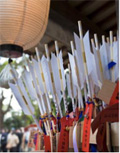 Hamaya demon-breaking arrows
Hamaya demon-breaking arrows
Meiji-jingu in Tokyo is a popular destination for many hatsumoude visitors from Ganjitsu until January 3 and is known to attract the most visitors in Japan, with over 3 million visiting the shrine during this time. Narita-san Shinsho-ji in Chiba Prefecture and Kawasaki Daishi in Kanagawa Prefecture are also temples that attract numerous hatsumoude visitors.
After praying during hatsumoude, many people buy a talisman or an evil-warding arrow called a
hamaya. Another custom is to return one's old talisman and hamaya that were bought the previous year. Some shrines and temples distribute sake to their visitors, which is claimed to keep misfortune away when consumed.
Q1: Many temples in Japan do a certain thing from midnight on December 31. What do they do?
A. Water the ground
B. Launch fireworks
C. Toll a bell
Q2: Many people also purchase an omikuji paper strip at the shrine or temple during their hatsumoude visit. What is an omikuji for?
A. A donation to the local shrine
B. To read one's fortune
C. A form of raffle ticket
Answers
Q1: C. Japanese shrines toll the Joya no kane (Bells of New Year's Eve) as the date changes from December 31 to January 1. They are rung 108 times. Buddhism teaches that there are 108 worldly desires that trouble the human mind and body. Tolling the New Year's Eve bells 108 times is believed to eradicate these desires.
Q2: B. An omikuji bears the fortune of the person who draws it, expressed in standard terms including "Daikichi" (Great), "Kichi" (Good) or "Kyo" (Bad), followed by a detailed explanation.



